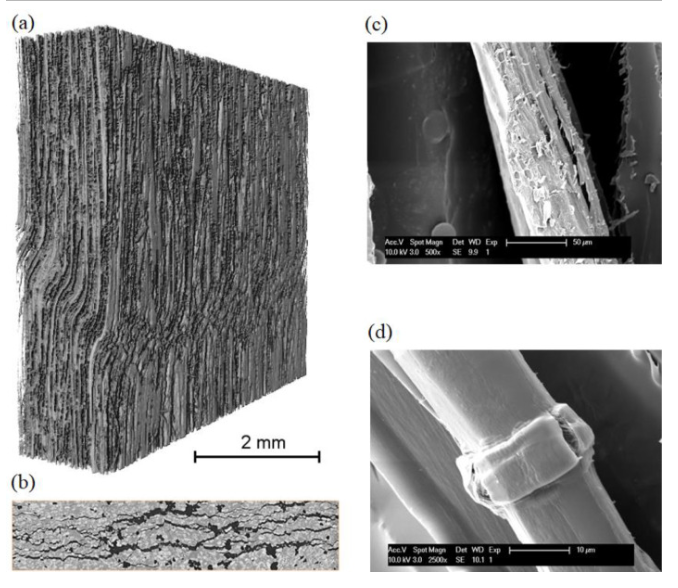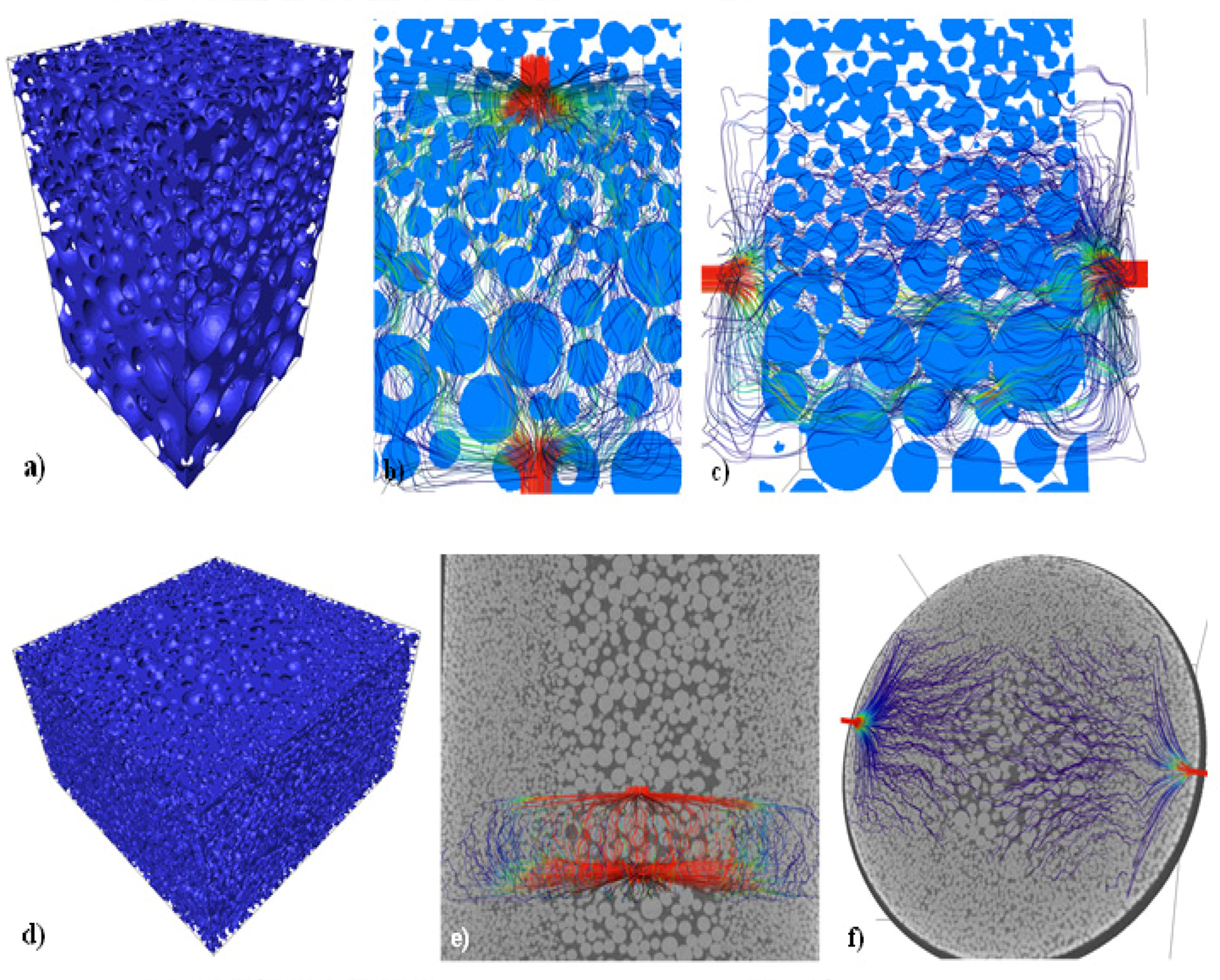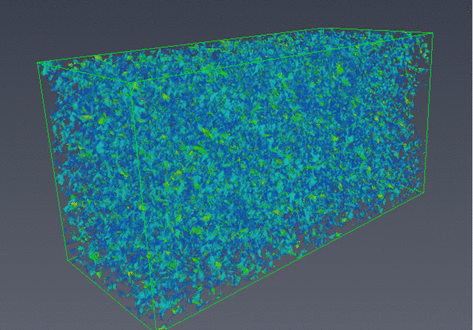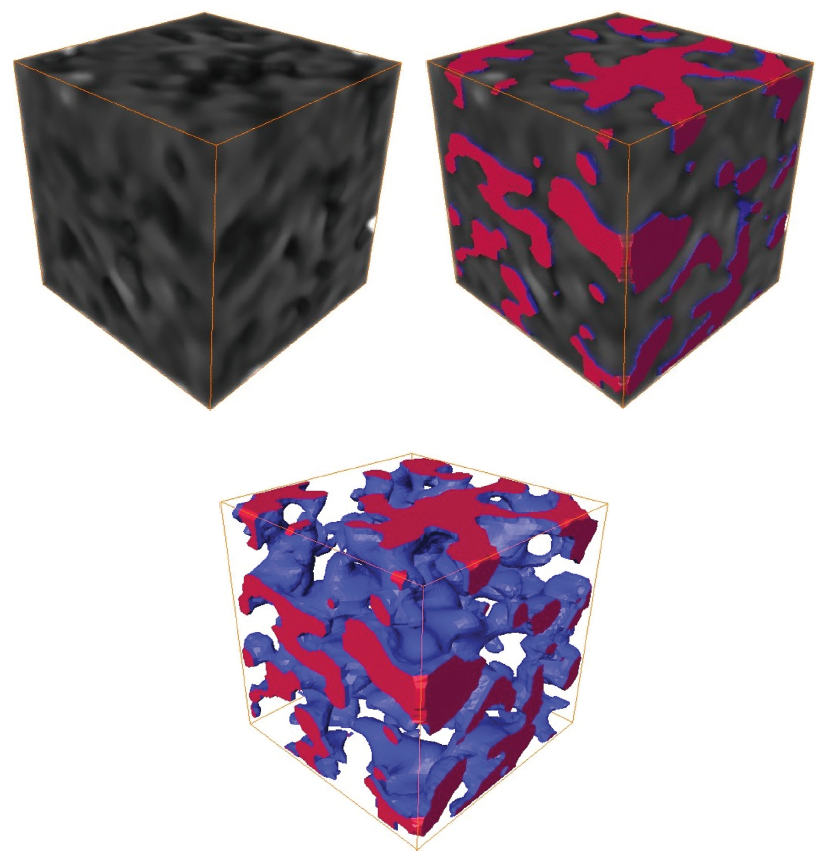Welcome to the Amira-Avizo Software Use Case Gallery
Below you will find a collection of use cases of our 3D data visualization and analysis software. These use cases include scientific publications, articles, papers, posters, presentations or even videos that show how Amira-Avizo Software is used to address various scientific and industrial research topics.
Use the Domain selector to filter by main application area, and use the Search box to enter keywords related to specific topics you are interested in.

In this study, the researchers investigated the compressive failure mechanisms in flax fiber composites, a promising eco-friendly alternative to synthetic composite materials, through both numerical simulations and experimental analysis. They examined the reasons behind the low compressive strength in comparison to tensile strength, focusing on the compressive-to-tensile strength ratio. A novel thermodynamically consistent continuum damage micromechanics model was introduced to capture the ev... Read more
Vedad Tojaga, Alexandros Prapavesis, Jonas Faleskog, T. Christian Gasser, Aart W. van Vuure, Sören Östlund

Nowadays, industrial processes demand materials with specific properties and localized microstructures to improve material performance. To satisfy particular needs, the development of materials with changing mechanical properties and/or microstructures along a preferential direction has been developed. These are called Functional Graded Materials (FGMs). Among these materials, a variation on the porosity along the part is very useful for different industrial applications, such as microfiltrat... Read more
Jorge Sergio Téllez-Martínez, Luis Olmos, Víctor Manuel Solorio-García, Héctor Javier Vergara-Hernández, Jorge Chávez, Dante Arteaga

The development of focused ion beam-scanning electron microscopy (FIB-SEM) techniques has allowed high-resolution 3D imaging of nanometre-scale porous materials. These systems are of important interest to the oil and gas sector, as well as for the safe long-term storage of carbon and nuclear waste. This work focuses on validating the accurate representation of sample pore space in FIB-SEM-reconstructed volumes and the predicted permeability of these systems from subsequent single-phase flow s... Read more
Department of Chemical Engineering, Qatar Carbonates and Carbon Storage Research Centre, Imperial College London | Department of Applied Mathematics and Theoretical Physics, Cambridge University

The aim of this paper was to develop a model that can characterize the actual micropore structures in coal and gain an in-depth insight into water’s seepage rules in coal pores under different pressure gradients from a microscopic perspective. To achieve this goal, long-flame coals were first scanned by an X-ray 3D microscope; then, through a representative elementary volume (REV) analysis, the optimal side length was determined to be 60 μm; subsequently, by using Avizo software, the coal ... Read more
Gang Zhou, Lei Qiu, Wenzheng Zhang, and Jiao Xue